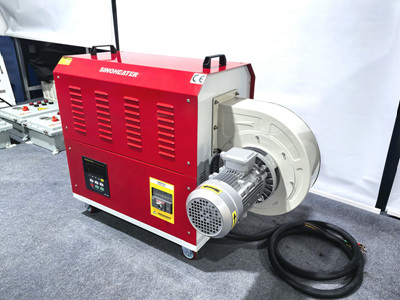Choosing the Right Size Heat Blower Based on Heating Range Requirements
Selecting a heat blower with an appropriate heating range is critical for ensuring efficiency, safety, and cost-effectiveness in industrial, commercial, or residential applications. The size of the unit directly impacts its ability to maintain desired temperatures across a space without overworking or underperforming. Below are key considerations to align your heating needs with the correct heat blower dimensions.
Understanding Heating Range Metrics
The heating range of a heat blower refers to the maximum area or volume it can effectively warm under standard conditions. This metric is influenced by factors such as airflow output (measured in cubic feet per minute, or CFM), heat output (in BTUs or kilowatts), and the unit’s design efficiency.
To determine the ideal range, calculate the total volume of the space requiring heating by multiplying its length, width, and height. For example, a 20 ft × 30 ft × 10 ft room has a volume of 6,000 cubic feet. Compare this figure against the manufacturer’s specified heating capacity, ensuring the heat blower can handle the load without strain. Overestimating the required range may lead to energy waste, while underestimating can result in insufficient warmth.
Assessing Airflow Distribution and Coverage
Even if a heat blower has sufficient heating power, its effectiveness depends on how evenly it distributes warm air. Larger spaces or areas with obstructions, such as machinery or partitions, require units with higher CFM ratings to ensure consistent circulation.
Consider the heat blower’s throw distance—the maximum distance it can project heated air effectively. For open-plan environments, a model with a wide throw angle and adjustable louvers can direct warmth across the entire area. In contrast, confined spaces may benefit from a compact unit with focused airflow to avoid localized overheating. Always match the airflow pattern to the layout of your space to maximize coverage.
Environmental Factors Affecting Size Selection
External conditions play a significant role in determining the necessary heating range. Cold climates or poorly insulated buildings demand heat blowers with higher output to compensate for heat loss through walls, windows, or doors. Conversely, well-insulated spaces in moderate climates may require smaller units.
Ventilation requirements also influence size. Areas with high air exchange rates, such as warehouses or workshops, need heat blowers capable of counteracting drafts and maintaining stable temperatures despite frequent air changes. Evaluate the space’s insulation quality and ventilation needs alongside heating range specifications to avoid undersizing or oversizing the unit.
Mounting and Installation Constraints
The physical dimensions and mounting options of a heat blower can limit its placement, indirectly affecting heating range. Wall-mounted units save floor space but may have restricted airflow direction, while ceiling-mounted models offer broader coverage but require structural support.
Measure the available installation area to ensure compatibility with the heat blower’s footprint. Additionally, check for clearance requirements around vents and electrical components to prevent overheating or reduced efficiency. A properly installed unit operates more effectively, ensuring its advertised heating range is achieved in real-world conditions.
Energy Efficiency and Operational Costs
Larger heat blowers consume more energy, so balancing heating range with efficiency is essential for long-term savings. Look for models with adjustable thermostats or variable-speed fans, which allow you to tailor output to current demands rather than running at full capacity constantly.
Energy Star ratings or similar certifications can indicate compliance with efficiency standards, helping you identify units that deliver optimal performance without excessive power consumption. Prioritize features like programmable timers or eco modes to further reduce operational costs while maintaining comfort.
By evaluating heating range metrics, airflow distribution, environmental factors, installation constraints, and energy efficiency, you can select a heat blower sized appropriately for your specific needs. This ensures reliable performance, minimizes waste, and extends the unit’s lifespan.




